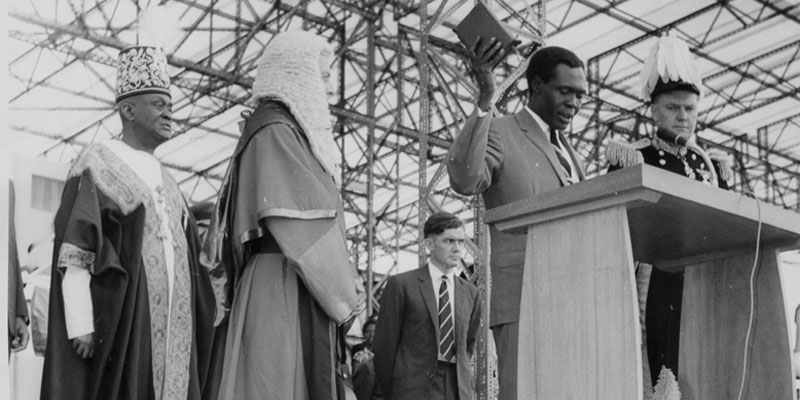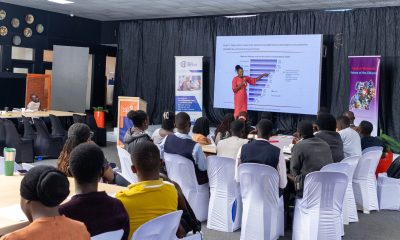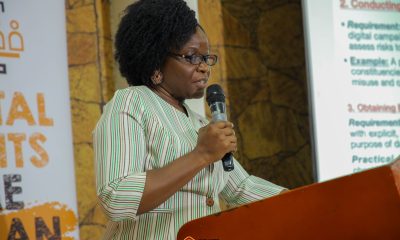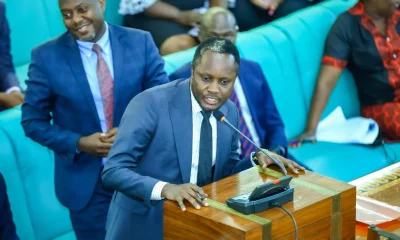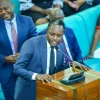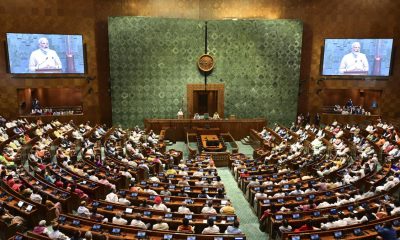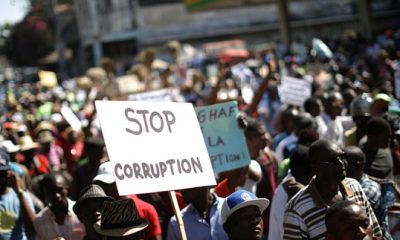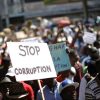Analysis
Ups and downs of Uganda’s 55 years of Independence
Fifty-five years ago, Prince Edward, the Duke of Kent, represented Queen Elizabeth Regina of the United Kingdom, in officially handing over the powers of the newly-independent Ugandan State to Apolo Milton Obote, the second Prime Minister of Uganda, on the country’s Independence Day on October 9, 1962. That nationally pivotal day was marked with what has continued to be a tradition of the Independence Day celebrations.
The national celebrations are usually held at the Kololo ceremonial grounds, where the first celebrations were held. However, over time celebrations have also been consigned to other venues in the major towns in the country.
It has come down as a tradition that the Independence Day candle is lighted; there is hoisting of the national flag and lowering on the same spot that the Colonial flag was lowered those years ago; then, there is the usual military march past, followed by other marches from the members and workers in other institutions in Government. Also, school students from nearby schools have been involved in these marches past.
Preceding the presidential speech at times, the Uganda Airforce will perform a fly-past of its fighter jets at supersonic speeds. Watching from the podium will be visiting Heads of State invited from a number of countries often in the East African Community. Other invited national dignitaries will also be present, as are the national religious leaders from all faiths and diplomats representing their countries here.
Apart from Obote, four other presidents have presided over these celebrations. These are: Idi Amin, Tito Okello, Godfrey Binaisa and Yoweri Museveni. Of the other leaders who have occupied the helm of Uganda’s Presidency, only Yusuf Lule did not have the opportunity to host the celebration, as his 68 days in power did not fall within October 9. Other leaders who hosted the celebrations were: Paulo Muwanga as the chairman of the Military Commission and Wacha Olwol of the Presidential Commission.
Pre-Museveni Eras
In hosting these celebrations, the period can be divided into pre and post-Museveni eras. In the 24 years before Museveni came to power, there were eight governments; his has been single in the succeeding 31 years.
Tumultuous times have happened in all the past 54 years. From nearly the start, Obote precipitated the 1966 Buganda Crisis in which five ministers were arrested and the first President of Uganda, Sir Edward Mutesa, was forced into exile in Britain. That marked the capture and occupation of the Lubiri, the seat of Buganda Kingdom, by the Central Government. It subsequently led to the abrogation of all the other kingdoms that had been stipulated by the withdrawing British Colonialists in their departing 1962 Constitution.
It led to the promulgation of the “pigeon-hole” constitution of 1964 in which Obote swore the creation of the Republic.
Eight years later, Colonel Idi Amin came to power in a military coup that overthrew the Obote Government. Amin ruled by decree; and his Government was characterized by human rights abuse, economic failure and, most globally known of all, the expulsion of the Asian community in 1972.
Another significant event during Amin’s rule was when the Popular Front for the Liberation of Palestine (PFLP) hijacked an Air France flight from Paris to Entebbe International Airport in 1976, with many Israelis on board. Amin welcomed the terrorists and supplied them with troops and weapons, but was humiliated when Israeli commandos subsequently rescued the hostages in a surprise raid on the airport.
Life President Amin’s occupancy came to a screeching halt in 1979 when the Tanzanian Peoples Defense Forces (TPDF) in the company of three Uganda rebel groups – Obote’s Kikoshi Maluum, Museveni’s Front for the National Liberation (FRONASA) and Ateker Ejalu’s Save Uganda Movement (SUM), chased Amin from power. He died in exile in Saudi Arabia 24 years later.
This was the time of unconstitutional leaderships when there were no elected leaders. It ended in 1979 after the Liberation War, when it followed the overthrow of Amin and saw Yusuf Lule named President by the Moshi, Tanzania, conference. After Amin, Lule served as the interim President for just 68 days.
On June 20, 1979, Binaisa was appointed president by the National Consultative Council (NCC), which was then the supreme governing body of the Uganda National Liberation Front (UNLF), a coalition of former Ugandan exiles of Kikoshi Maalum, FRONASA and SUM who had helped remove Amin. When Binaisa was removed in 1980 by the Military Commission, a powerful organ of the UNLF headed by Muwanga, and whose deputy was Museveni, emerged.
Then, the NCC prepared the country for the 1980 elections that brought Obote back to power. It was for only five years and then another coup by Tito Okello.
31 Years of Museveni
Throughout the post Amin power struggle right up to the 1980 elections, Museveni played some role in shaping the politics which he later inherited in 1986. For example, Museveni fought the Obote and Okello governments in a guerrilla war.
Museveni’s leadership can be broken down into five terms. The first was the 1986 -1991. The second was 1991-1995. The third was the elected term of 1996-2001. Most notable in this period was his fall-out with Dr. Kizza Besigye, a close confidant of the guerilla war physician. The election culminated in a petition filed by Besigye at the Supreme Court of Uganda. The court ruled that the elections were not free and fair but declined to nullify the outcome by a 3–2 majority decision.
Also, this was the time when Alice Lakwena and Joseph Kony were to launch the Lord’s Resistance Army war that was to last for 20 years in the north and north-east of the country.
The Organisation of African Unity (OAU), elected Museveni in 1991 and 1992 as its chairman. At the start of this period, with the help of the US Government, Museveni’s Government’s successfully campaigned against HIV/AIDS. During the 1980s, Uganda’s HIV incidence (rate of new infections) which stood at 30%, was one of the highest in the world. Museveni’s bold and open stewardship campaign against the disease earned him international acclaim including from the major powers. Infections soon came down to about 10 percent in a few years.
Uganda’s rates are comparatively low, and the country stands as a rare success story in the global battle against the virus.
With the fall in HIV infections, came heavy inflow of international aid. The aid money was further boosted by the cancellation of billions of dollars Uganda owed international lenders.
The cancellation of debt, coupled with a significant inflow of Foreign Direct Investment (FDI) gave Museveni substantial clout.
Also notable during this period, was the prudential economic management of the economy by the central bank, that helped to lower inflation, and restored confidence among investors.
Following the Rwandan Genocide of 1994, Rwandan and Uganda invaded the Democratic Republic of Congo (DRC) again, in what has been termed, the Second Congo War, this time to overthrow Joseph Kabila, who was a former ally of Museveni and Paul Kagame ally.
Uganda’s intervention was presumably to stop a “genocide” against the Banyamulenge and to prevent the Allied Democratic Forces (ADF), another rebel group that had bases in the DRC.
Rwanda and Uganda soldiers plundered the country’s rich mineral deposits and timber; and in 2005, the International Court of Justice (ICJ) ruled that Uganda pay compensation to the DRC of ten billion dollars.
Museveni’s fourth term of 2001-2006 was characterized by much recrimination and bitterness during the 2001 presidential elections campaign. Again, Besigye challenged the election results in the Supreme Court of Uganda.
Two of the five judges concluded that there were such illegalities in the elections, and that the results should be rejected. The other three judges decided that the illegalities did not affect the result of the election in a substantial manner.
The main opposition party, the Forum for Democratic Change (FDC), accused Museveni of engaging in a “life presidency project”. Former U.S. Ambassador to Uganda, Johnnie Carson, criticized Museveni saying, “We may be looking at another Mugabe and Zimbabwe in the making.”
That, “Many observers see Museveni’s efforts to amend the constitution as a re-run of a common problem that afflicts many African leaders – an unwillingness to give up power”.
The February 2006 general elections which led to Museveni’s sixth term were preceded by the arrest of the main opposition leader Besigye and charged with treason and rape. Museveni won that election, too. The Court voted 4-3 to uphold the results.
In 2007, Museveni pulled another masterstroke when he deployed Uganda People’s Defence Forces (UPDF) in Somalia. The army justified the deployment in Somalia as a necessary step to keep terrorists away.
In 2009 was another remarkable year in Museveni’s leadership. Museveni’s refusal to allow the Kabaka of Buganda to travel to Kayunga, one of Buganda’s 18 counties, sparked riots across Buganda.
The riots that erupted in most major towns of Buganda, left up to 40 people dead and countless others injured or imprisoned. The actual impact of these riots are not known.
Furthermore, nine more people were killed during the April 2011 “Walk to Work” demonstrations. According to the Human Rights Watch 2013 World Report on Uganda, the government has failed to investigate the killings associated with both of these events
It was also at this time that the issue of the Anti-homosexuality Bill against the Lesbian, Gay, Bisexual and Transgender (LGBT) community came to light. The British newspaper, The Guardian, reported that Museveni appeared to add his backing to the legislative effort by, among other things, claiming “European homosexuals are recruiting in Africa”, and saying gay relationships were against God’s will.
Museveni’ sixth term 2011-2016 was again disputed by both the European Union (EU) and the Opposition. “The electoral process was marred with avoidable administrative and logistical failures”, according to the European Union election observer team.
In more recent years, infringements on press freedom have increasingly been a central focus in which Human Rights Watch registered 50 attacks on journalists, despite multiple pledges to respect media freedom.
Museveni is now effectively in his sixth term. Recent events concerning the amendment of the Article 102(b) of the constitution to remove the age limit of 75 years for a person to stand as president, has occupied the attention of the whole country and beamed around the world in the social media. Called locally as Togikwatako (Luganda for, Don’t Touch it), the acrimony following the introduction of the Bill to Parliament, is instructive of what manner this years Independence Celebrations will look like.
In a flashback to the 1966 arrest of the ministers from the Parliamentary Chamber, there were fist-fights and flying chairs between the Opposition and the ruling NRM MPs last week. It ended with many Opposition MPs being arrested or taken to hospitals around Kampala, some with serious injuries.
The age-limit clause is “the last remaining check to ensure an orderly succession”, says Frederick Ssempebwa, a lawyer who helped draft the 1995 Constitution. Without it, he adds, the President is “almost invincible”. Says Youth MP, Anna Adeke, “There are no institutions. Everything can be changed by a phone call.” Hopefully, this will not happen to the 55th Independence Day Celebrations at Kololo Airstrip.
Comments



